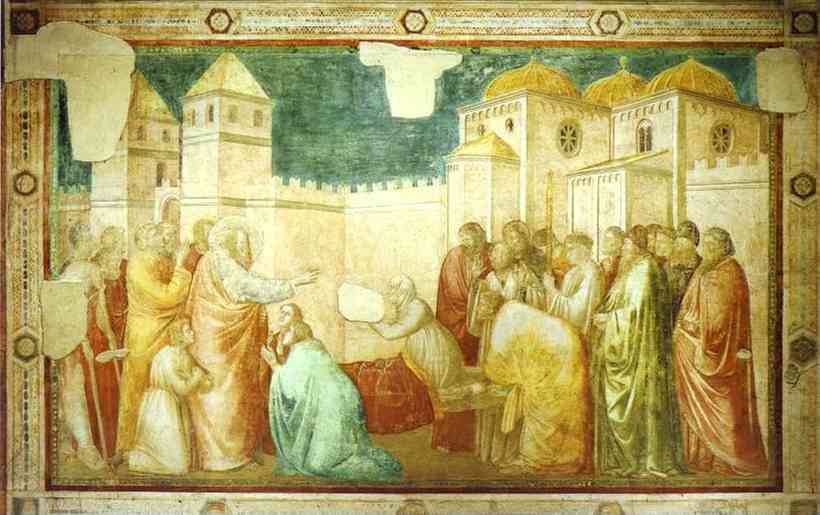Giotto, Raising of Drusiana, Peruzzi Chapel
Giotto, Raising of Drusiana, Peruzzi Chapel
Jacobus de Voraigne’s Legenda Aurea provided the textual source for Giotto’s Raising of Drusiana.
John the Evangelist is entering the city of Ephesus in Asia Minor, when he meets the funeral procession of Drusiana, a woman who, in her lifetime had followed John ‘s own example. John is told by members of the funeral party that Drusiana had longed to set eyes on him again before her death. The Saint tells the procession to stop and commands, Drusiana arise, and go into thy house, and make ready for me some refection. Drusiana, miraculously restored to life, is seen sitting up on the bier.
We cannot know for certain why Giotto chose this particular scene out of the many episodes in the life of John the Evangelist, but certainly, the theme of death and rebirth implying life after death, was particularly appropriate for a burial chapel. Drusiana is not a saint, she is an ordinary woman and this miracle of raising her from the dead, points to the rewards that are due to the pious citizen. The emphasis on divinely assisted resurrection is surely meant to offer a promise of future resurrection to the donor of the murals and all others buried within the chapel.
The Raising of Drusiana does not appear frequently in trecento or quattrocento painting.

